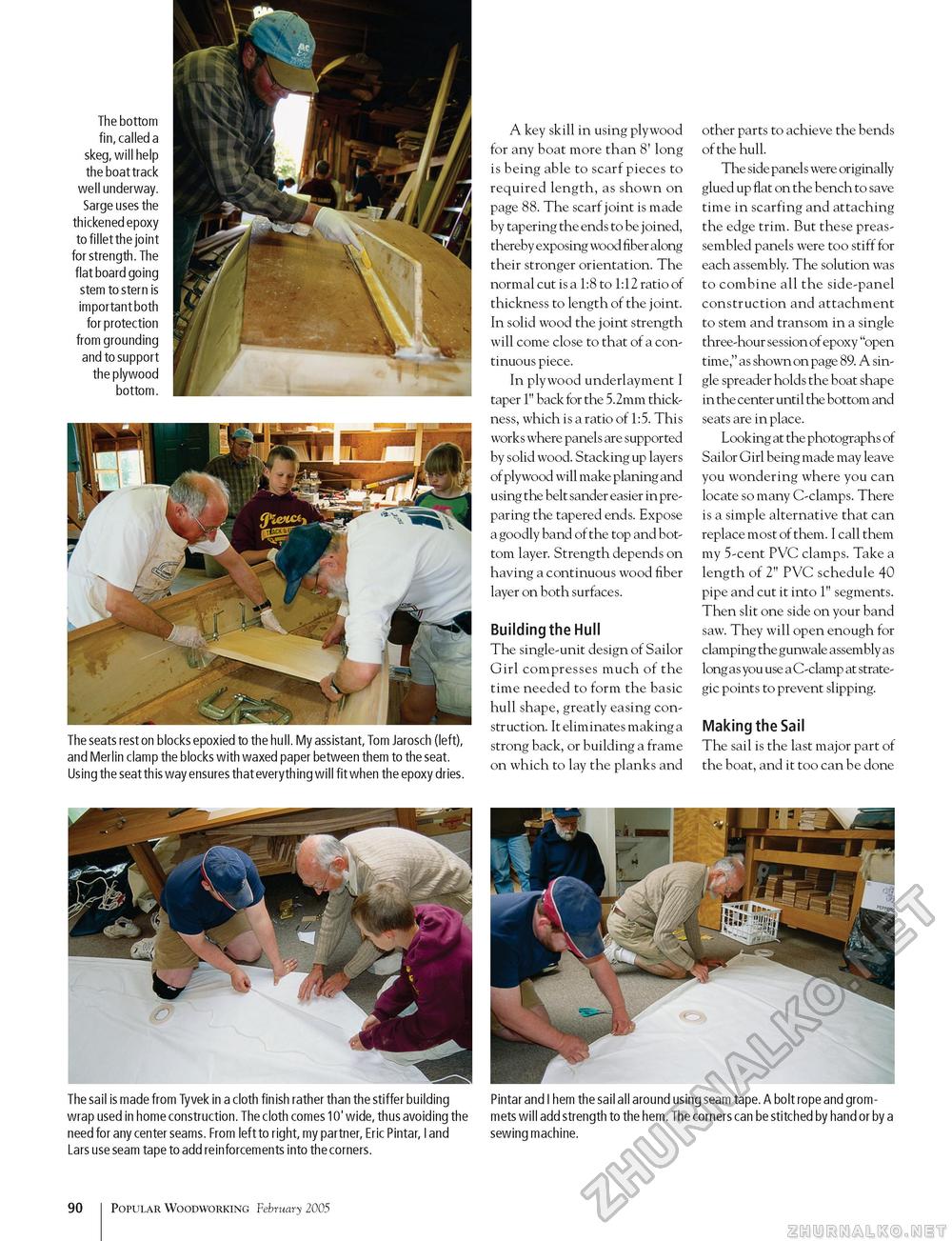Popular Woodworking 2005-02 № 146, страница 95
The bottom fi n, called a skeg, will help the boat track well underway. Sarge uses the thickened epoxy to fillet the joint for strength. The fiat board going stem to stern is important both for protection from grounding and to support the plywood bottom. The seats rest on blocks epoxied to the hull. My assistant, Tom Jarosch (left), and Merlin clamp the blocks with waxed paper between them to the seat. Using the seat th is way ensures that everything will fit when the epoxy dries. A key skill in using plywood for any boat more than 8' long is being able to scarf pieces to required length, as shown on page 88. The scarf joint is made by tapering the ends to be joined, thereby exposing wood fiber along their stronger orientation. The normal cut is a 1:8 to 1:12 ratio of thickness to length of the joint. In solid wood the joint strength will come close to that of a continuous piece. In plywood underlayment I taper 1" back for the 5.2mm thickness, which is a ratio of 1:5. This works where panels are supported by solid wood. Stacking up layers of plywood will make planing and using the belt sander easier in preparing the tapered ends. Expose a goodly band of the top and bottom layer. Strength depends on having a continuous wood fiber layer on both surfaces. Building the Hull The single-unit design of Sailor Girl compresses much of the time needed to form the basic hull shape, greatly easing construction. It eliminates making a strong back, or building a frame on which to lay the planks and other parts to achieve the bends of the hull. The side panels were originally glued up flat on the bench to save time in scarfing and attaching the edge trim. But these preas-sembled panels were too stiff for each assembly. The solution was to combine all the side-panel construction and attachment to stem and transom in a single three-hour session of epoxy "open time," as shown on page 89. A single spreader holds the boat shape in the center until the bottom and seats are in place. Looking at the photographs of Sailor Girl being made may leave you wondering where you can locate so many C-clamps. There is a simple alternative that can replace most of them. I call them my 5-cent PVC clamps. Take a length of 2"" PVC schedule 40 pipe and cut it into 1"" segments. Then slit one side on your band saw. They will open enough for clamping the gunwale assembly as long as you use a C-clamp at strategic points to prevent slipping. Making the Sail The sail is the last major part of the boat, and it too can be done The sail is made from Tyvek in a cloth finish rather than the stiffer building wrap used in home construction. The cloth comes 10' wide, thus avoiding the need for any center seams. From left to right, my partner, Eric Pintar, I and Lars use seam tape to add reinforcements into the corners. Pintar and I hem the sail all around using seam tape. A bolt rope and grom-mets will add strength to the hem. The corners can be stitched by hand or by a sewing machine. 90 Popular Woodworking February 2005 |








